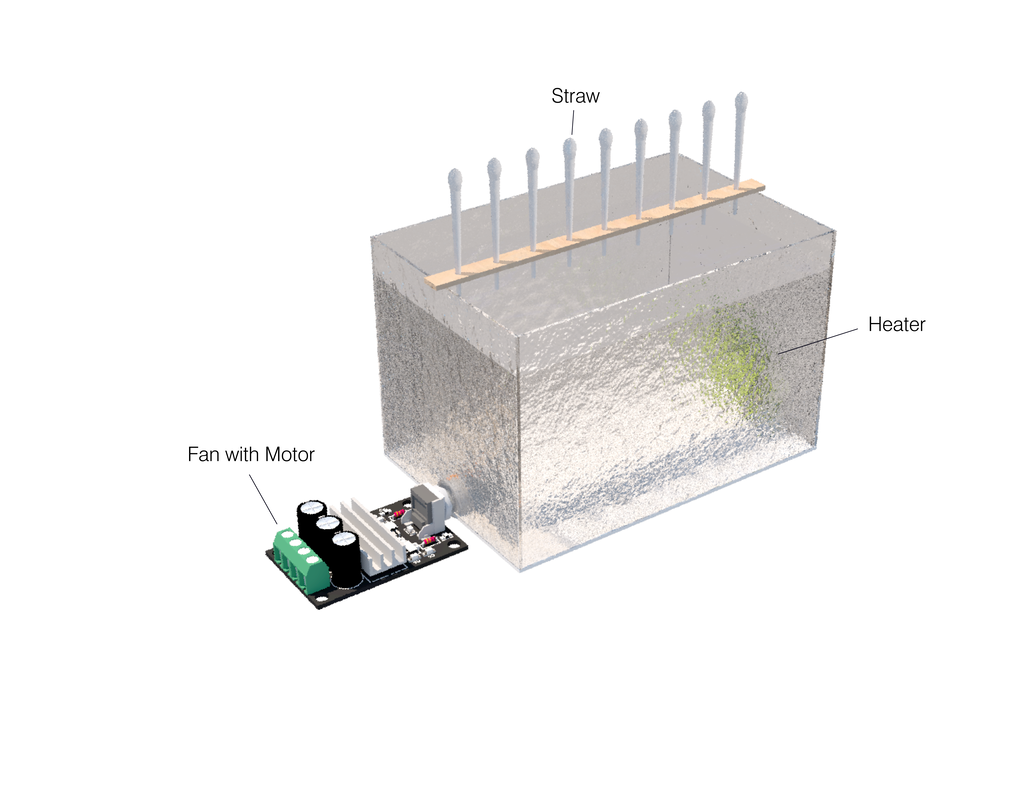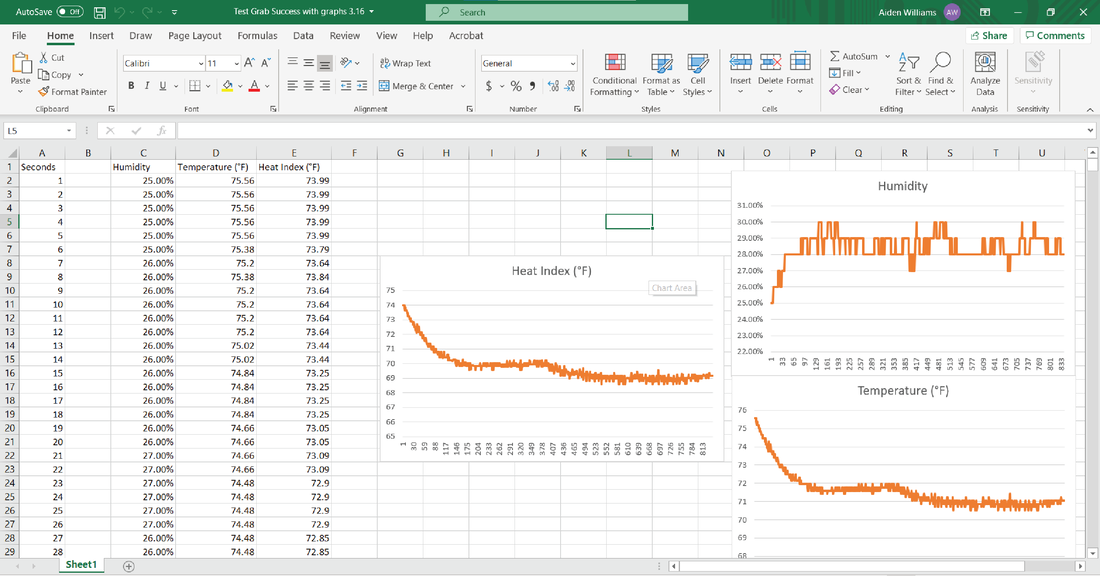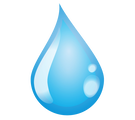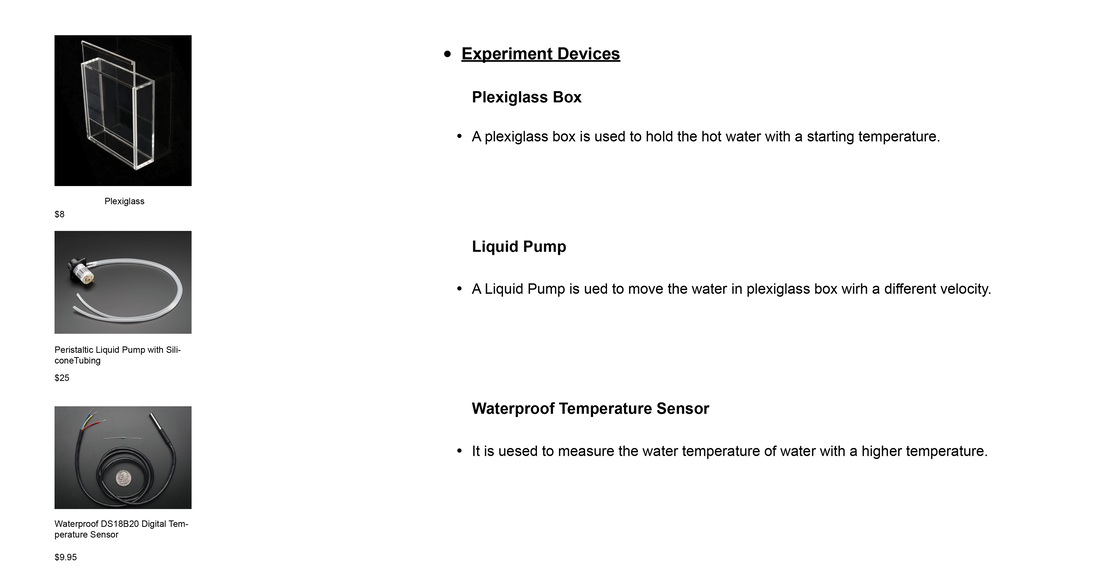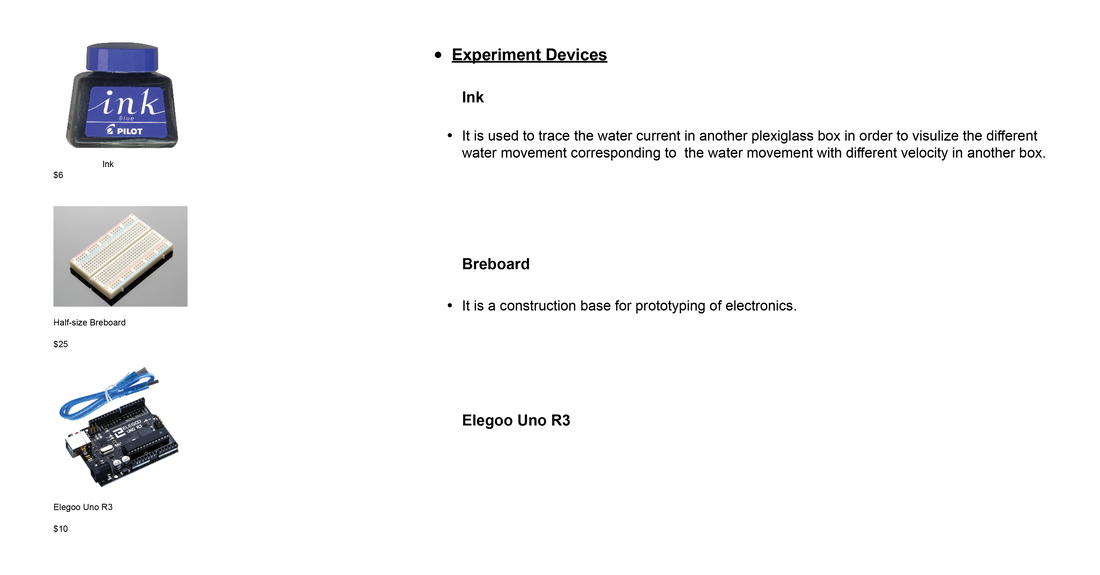Methodology
A heater is to used as a constant heating source to heat up the water. A fan driven by motor can move the water around in the box with various velocity. A bunch of straws are used to hold the ink with which demonstrates how the current flows.
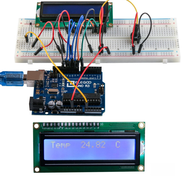
In experiment, the temperature sensor for air will be used to control the electric heater at a constant temperature through the code in Arduino.
A fan will be used to produce the moving air in various velocity.
Waterproof temperature sensor measure the temperature of water over time.
Ink is used to track and visualize how the convection flows.
A fan will be used to produce the moving air in various velocity.
Waterproof temperature sensor measure the temperature of water over time.
Ink is used to track and visualize how the convection flows.
Equiments and Material Needed
Updated Methodology
Simulation of Natural Convection
VS
- Water replaces the air to simulate natural convection of air since water is easier to be operated and visualized.
2.The moving water with various velocity to simulate the natural connvection with various velocity of movin air.
Experiment Devices
